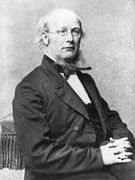 Horace L. Greeley (1811-1872) Horace L. Greeley (1811-1872) How did the concept of Manifest Destiny play to Frederick residents just three months after the close of the American Civil War? On July 13th, 1865, Horace Greeley, Editor of the New York Tribune newspaper, wrote an editorial promoting the Homestead Act which President Lincoln had signed earlier on May 20th, 1862. Young men working in Washington D.C. had complained about the cost of living and the low wages paid by the government. Greeley wrote: “Washington is not a place to live in. The rents are high, the food is bad, the dust is disgusting and the morals are deplorable. Go West, young man, go West and grow up with the country.” One young man was just too darn young to act on any impulse in 1865—but years later he would, multiple times. Eleven-year old Joseph Walling knew little of the world outside of his hometown, but appreciated the modes of travel afforded local residents wanting to see more of the country that had just been preserved by the recent four-year conflict. The young man’s father (Capt. Henry Jefferson Walling) was a popular passenger conductor for the Baltimore & Ohio Railroad, making trips to Charm City and elsewhere on a daily basis. Joe Walling would also understand the dangers involved in travel as well. His grandfather and namesake, Joseph M. Walling, was also an employee of the mighty B&O. He was tragically killed in a railroad derailment accident in March, 1858. Maybe travel was just in Joe Walling’s blood, and his childhood exposure to the carnage of the Civil War simply made him numb to danger? This can be hypothesized because Walling’s long-“road” ahead would be defined by two things: westward travel and engaging in risky professions and hobbies. Joseph Henry Jefferson Walling was born September 21st, 1853 in Frederick, Maryland. His family lived in a two story dwelling on East All Saints Street, located between the B&O Railroad Depot to the east, and the B&O Passenger Station to the west. "Joe" was five when his grandfather lost his life heading to work one day en-route to Baltimore. At eight, the American Civil War erupted, and Frederick would be visited by both major armies, North and South. Throughout the duration, wounded, sick and dying soldiers could be easily seen as they were brought for care to Frederick’s “one-vast hospital.” 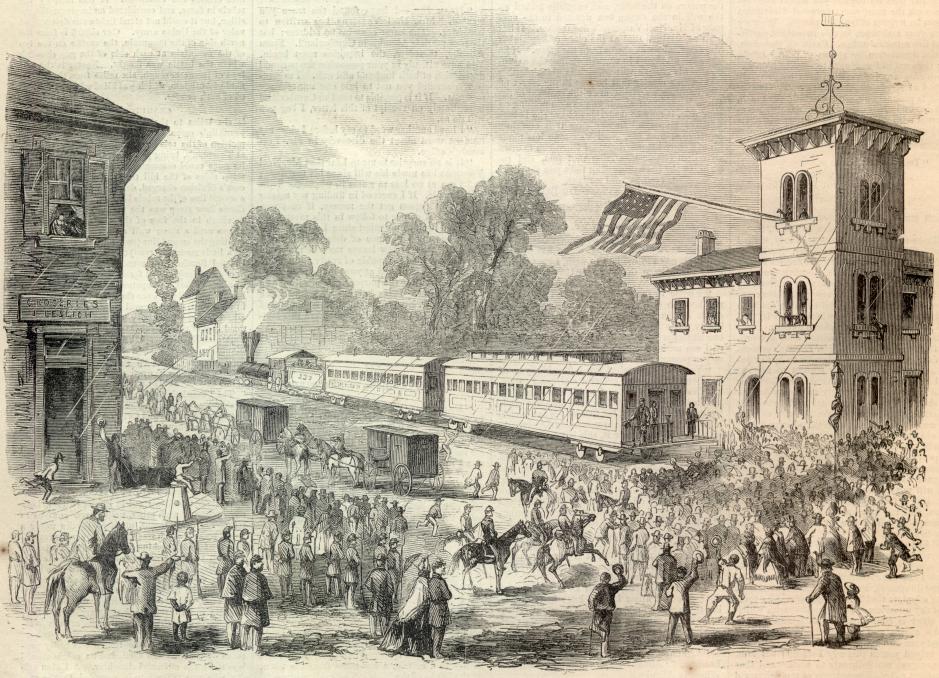 The Walling family residence can be seen in this wartime sketch depicting the October 4, 1862 visit of Abraham Lincoln to Frederick which appeared in Harpers Weekly magazine. This is the old B&O Passenger Station located at the southeast corner of E. All Saints and S. market streets. The two-story Walling home appears on the south side of All Saints Street (just beyond the locomotive) 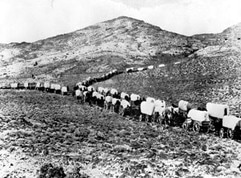 Wagon train on the Santa Fe Trail Wagon train on the Santa Fe Trail At 15, Joe followed in a first responder role, shared with both his father and grandfather as he joined the United Fire Company. He would spend the next 75 years in service to various fire companies, one day earning the moniker as “the oldest volunteer firefighter in the United States.” In 1871, Joe made his first big move and took up residence in Baltimore and worked for the railroad. Shortly thereafter, he earned a job as an Indian scout, guide and escort assisting wagon trains delivering shipments from Kansas City to points in the “Wild West.” Most of these were along the famed Santa Fe Trail, taking him to New Mexico and Arizona. He lived in the plains country for six years between 1872-1878. In between trips, he had proposed to the love of his life, Laura Staley. The couple married in 1876, but the life change didn’t seem to slow down Joe Walling one bit, as he would have plenty of stories to tell in the future of his western experiences. Nearly 70 years later, a newspaper writer of the Frederick News would write of Joe: “He could describe the markings painted on the faces of the Apaches and the sound of their battle cries as they attacked the wagon trains. He knew the Pawnee, the Arapahoes and the Sioux. Many a time their ponies streaked in lightning circles around the massed covered-wagons he protected, and he swapped bullets with the best of them.” Joe next ventured into the heart of Indian Territory (Oklahoma Territory) and became a bona-fide cowboy. For two years (1879-1880) he would ride the range, keeping a lookout for cattle rustlers and other unsavory men of the Old West. It was here that he met a young adventurer much like himself and named Gordon William Lillie. Lillie would later become a well-known American showman and performer under the name Pawnee Bill. He and wife May, a female marksman in the style of Annie Oakley, specialized in Wild West shows, including a short partnership with Maj. William F. Cody—Buffalo Bill. By June of 1880, Joe was back east in Frederick with wife Laura and son Henry Jefferson, who were living with Joe’s parents and grandmother in the family home on E. All Saints Street. He gained employment again with the Baltimore & Ohio Railroad as a brakeman. The job of the freight train brakeman was a solitary one and was especially dangerous. Before the widespread use of airbrakes in the late 19th century, trains were stopped through the manual application of brakes on each of the train’s cars. Even after the airbrake came into universal use, the brakeman still had to be ready to climb atop the train to manually set the brakes when the airbrakes failed to work or when a section of cars had to be cut from the train. In the interest of train safety, the middle brakeman, if there was one, would ride out in the open in order to be ready to manually apply the brakes if the need arose. Middle brakemen were most frequently used on long freight trains as well as on local freight lines where freight cars had to be cut loose or added on regularly.
One month later, Joe Walling would experience another tragic event with the death of wife Laura. His four children were grown, but the pain was no less. He took up residence with his daughter Betty Pennington, and lived under her roof at 907 S. Paca Street in Baltimore, only a few blocks west of the current day sports stadium complex of Camden Yards and M&T Bank Stadium. Joe Walling’s personal storytelling ability to family and friends was legendary. He had a welcome invitation to visit and “conduct court” at a plethora of fire houses across Charm City. This is likely how he earned the nickname of “Uncle Joe.” Joe needed something to fill his desire for travel and danger. He was working for a Baltimore ironworks at this time, and his chief hobby was that of a member of the Baltimore Wanderlust Club, an organization that conducted hiking outings. Joe loved this group and regularly walked long distances to towns across the region, including many trips to and from Frederick on foot. As Joe was trying to fill the major void created in his life following the loss of Laura, he decided to head west once again, as he had done in his youth. However, he wasn’t going to stay out west, he just wanted to visit, and come back to Maryland. In 1910, Joe embarked on the first of five known transcontinental trips he would attempt over the next 22 years. To San Francisco and back on foot was “Uncle Joe’s” first major feat. It also brought him notoriety and standing as one of the state’s most colorful characters. In 1915, Joe Walling planned another transcontinental trip, but this time aboard a pony. Escorted by policemen and drum corps, Joe set out on his journey from Frederick on April 1st. Unfortunately, the trek had to be aborted later in the month. After traveling 300 miles, the 62 year-old rider was thrown from his mount near Wheeling, WV. He suffered a broken leg but remained in good spirits, determined to try again in the spring of 1916.
In his eighties, he would continue to walk all over Baltimore, but would not attempt another cross-country sojourn. His last decade of life found Uncle Joe in the familiar role as raconteur as he told the tales of a storied life, full of adventure, duty to others, travel and the romance of the famed “Wild West.” Joseph J. Walling died quietly in Baltimore on July 2nd, 1944 at the age of 91. The “old warrior” made one last trip west to his native Frederick, where he would be laid to rest in the family plot in Mount Olivet Cemetery. He would take his place next to wife Laura, with his parents and grandparents close at hand. His monument reads:
“Here he lies where he longed to be. Home is the sailor, home from the sea.”
2 Comments
Charles Thomas
6/6/2017 10:49:34 am
Love your articles and find them very interesting in knowing more about the folks buried in Mount Olivet and the history of Frederick. Maryland
Reply
John Simpson
6/6/2017 09:47:29 pm
In poolsville md there is a road name Ed Dr Walling any relation to the above article. Good article, enjoyed reading it
Reply
Leave a Reply. |
STORIES
|
Archives
July 2024
June 2024
May 2024
April 2024
March 2024
February 2024
January 2024
December 2023
November 2023
September 2023
August 2023
July 2023
June 2023
May 2023
April 2023
March 2023
February 2023
January 2023
December 2022
November 2022
October 2022
September 2022
August 2022
July 2022
June 2022
May 2022
April 2022
March 2022
February 2022
January 2022
December 2021
November 2021
October 2021
September 2021
August 2021
July 2021
June 2021
May 2021
April 2021
March 2021
February 2021
January 2021
December 2020
November 2020
October 2020
September 2020
August 2020
July 2020
June 2020
May 2020
April 2020
March 2020
February 2020
January 2020
December 2019
November 2019
October 2019
September 2019
August 2019
July 2019
June 2019
May 2019
April 2019
March 2019
February 2019
January 2019
December 2018
November 2018
October 2018
September 2018
August 2018
July 2018
June 2018
May 2018
April 2018
March 2018
February 2018
January 2018
December 2017
November 2017
October 2017
September 2017
August 2017
July 2017
June 2017
May 2017
April 2017
March 2017
February 2017
January 2017
December 2016
November 2016

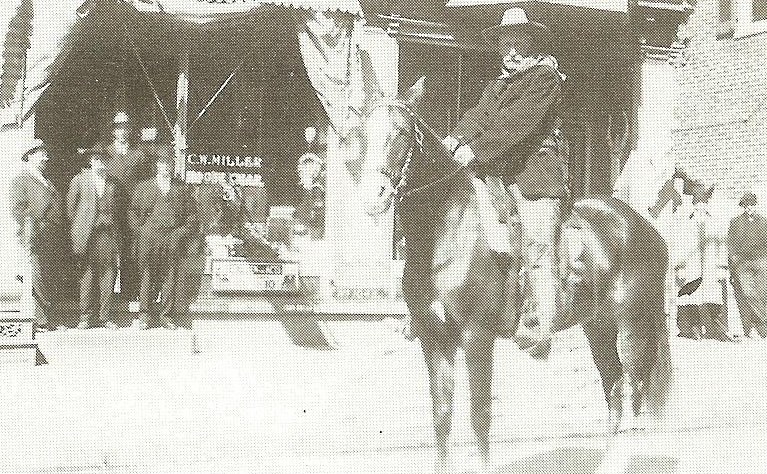
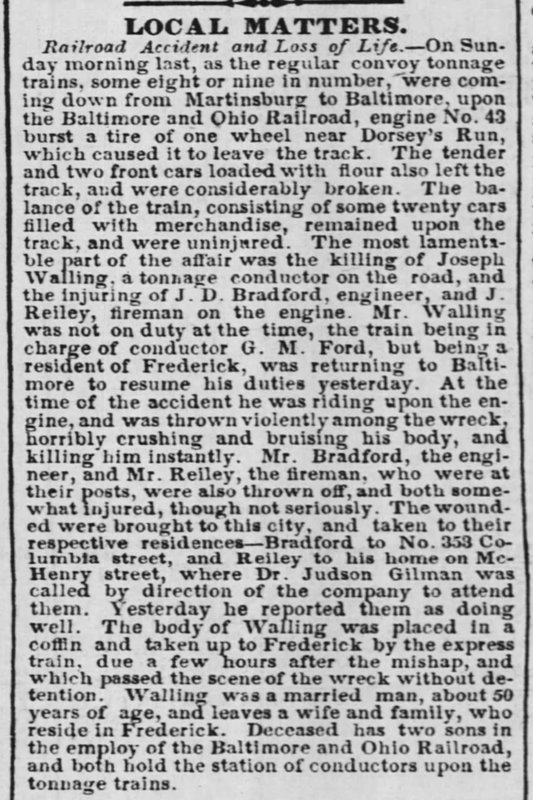
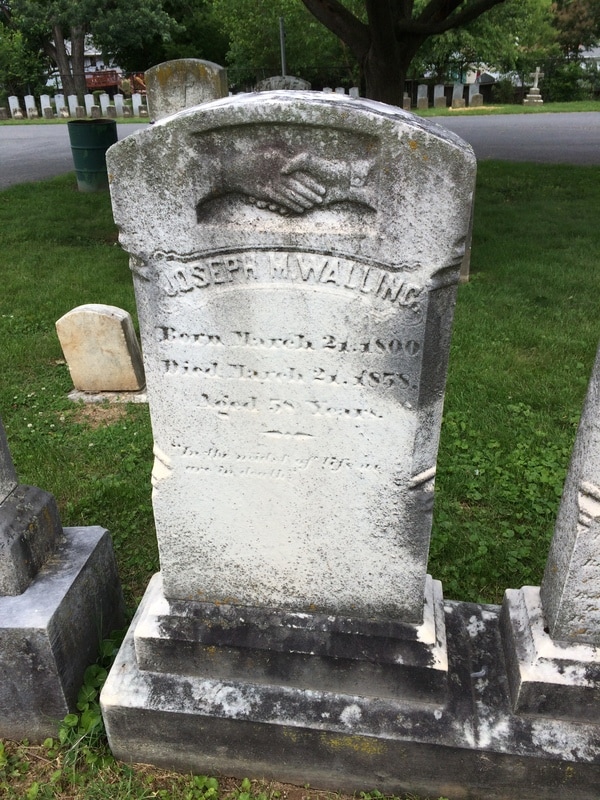
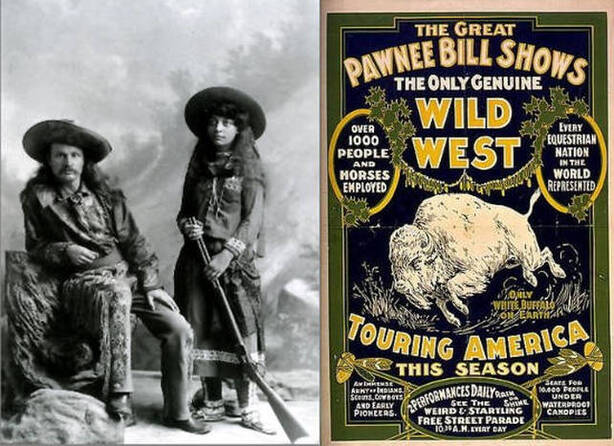

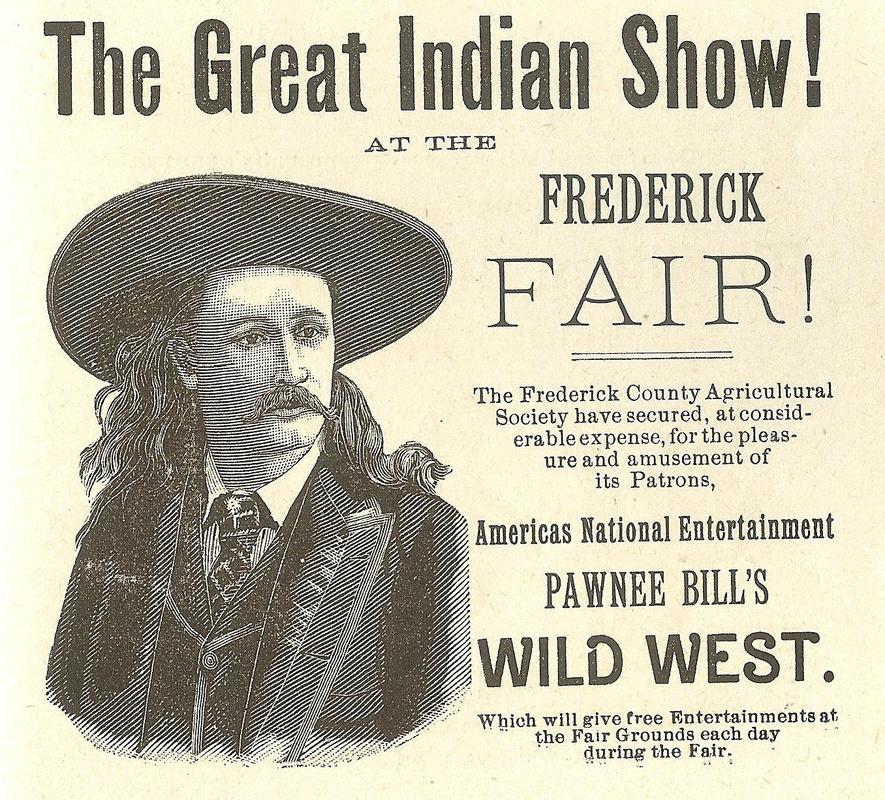
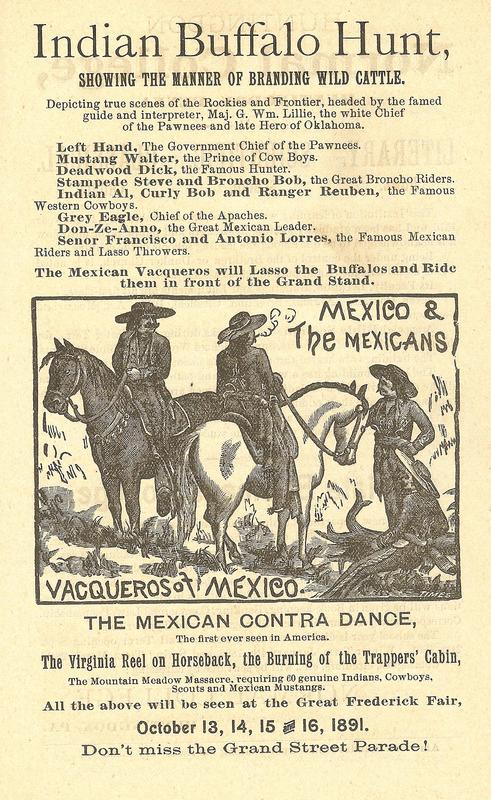
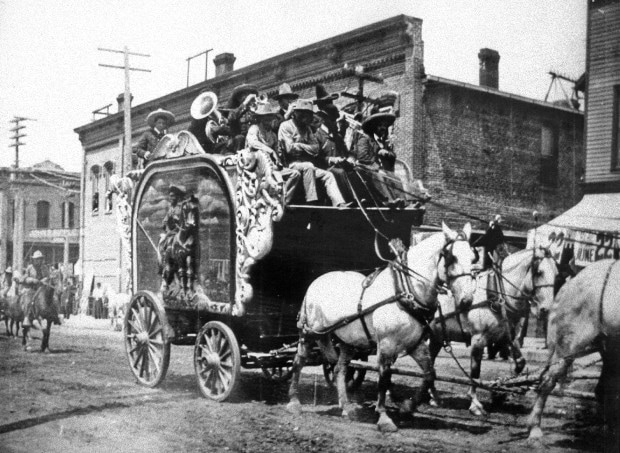
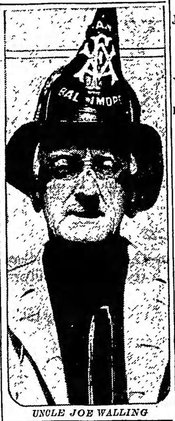
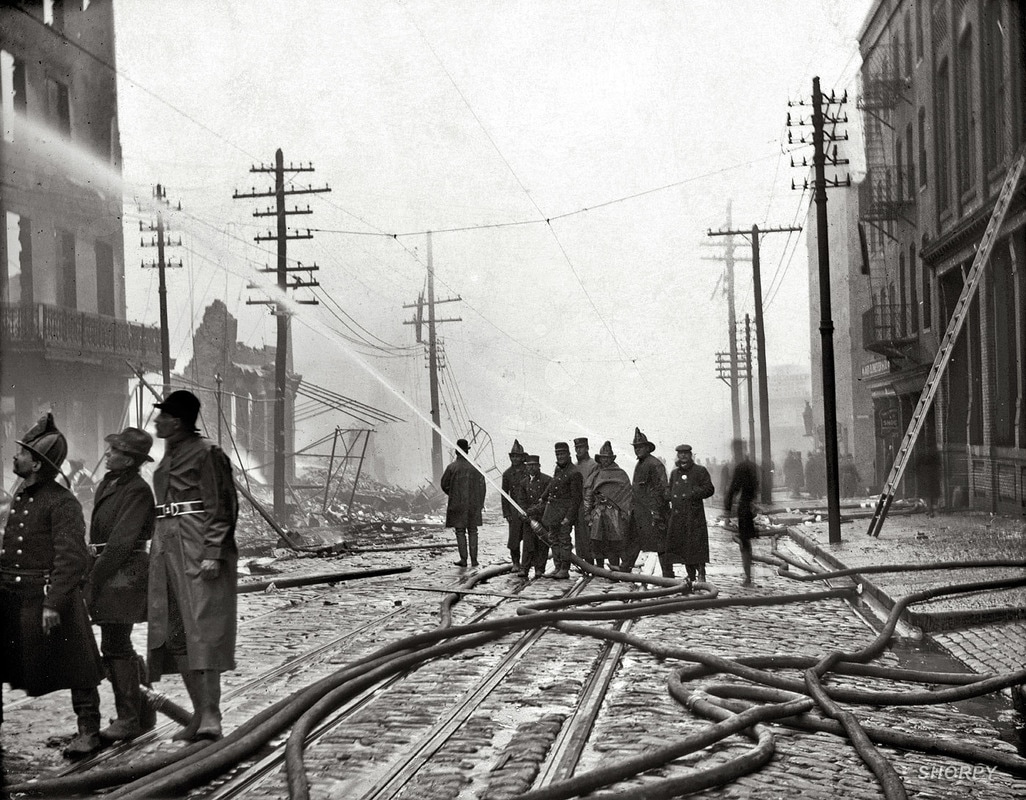
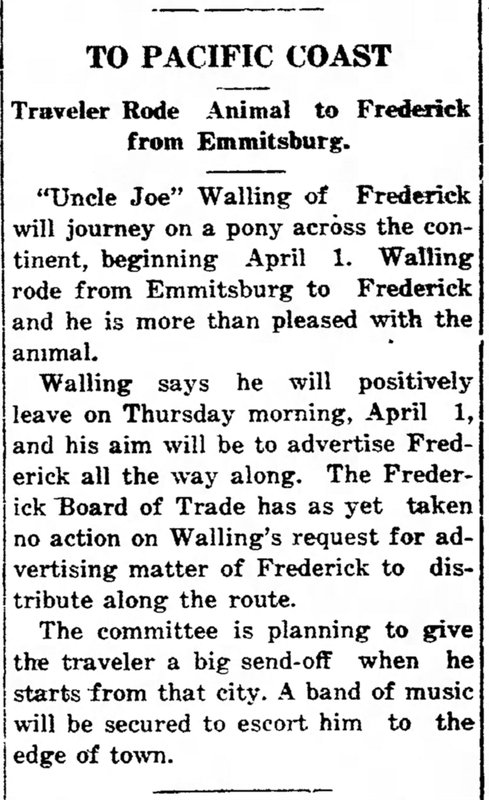
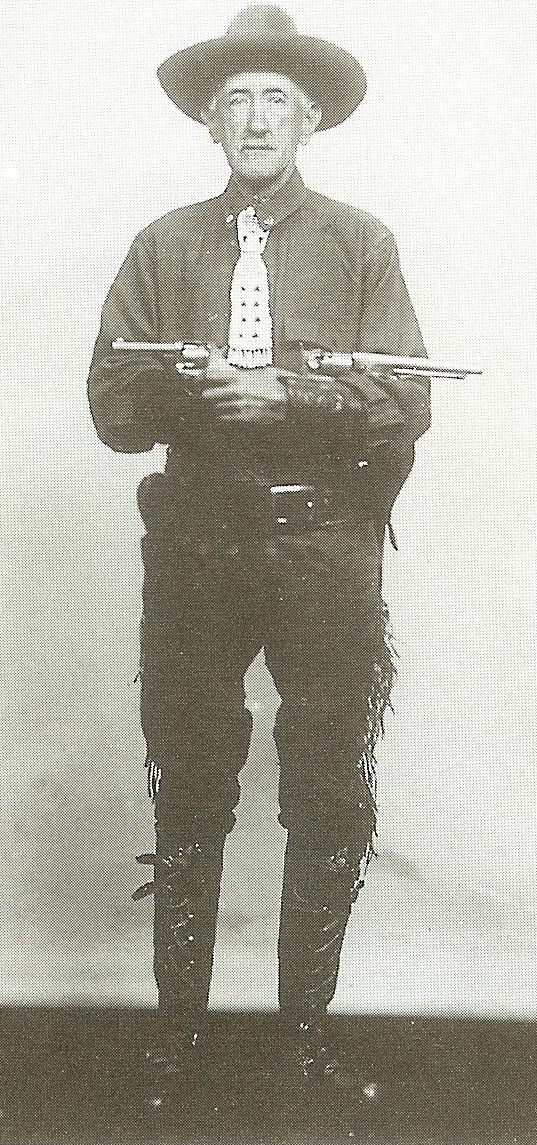
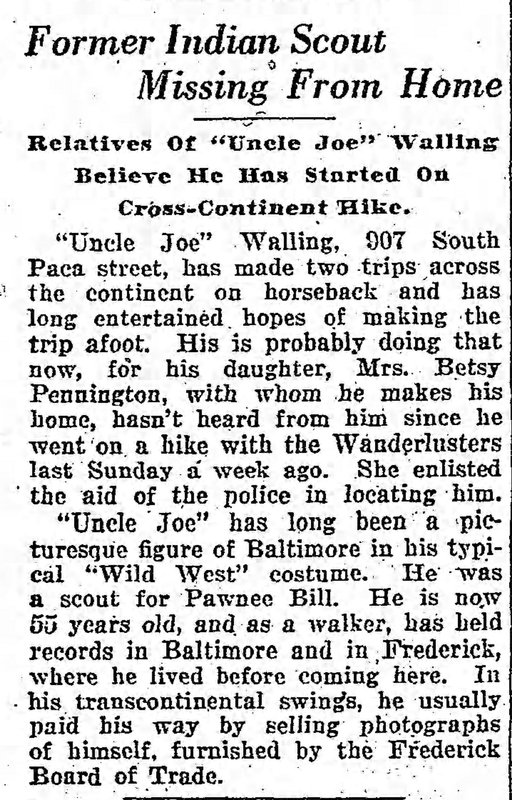

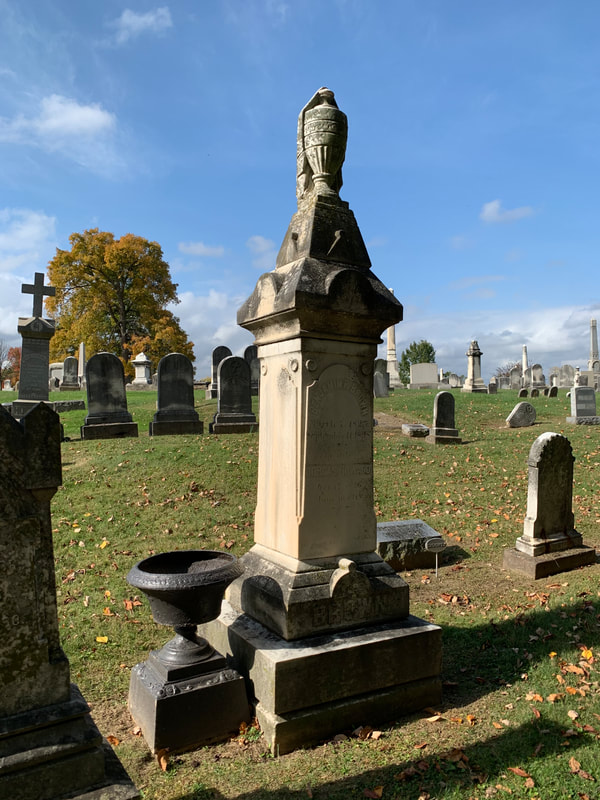



 RSS Feed
RSS Feed